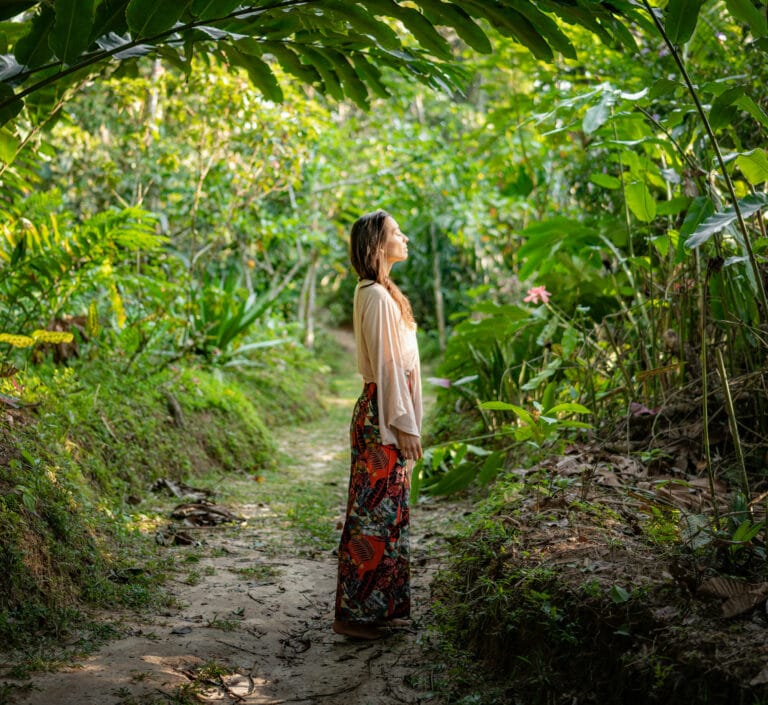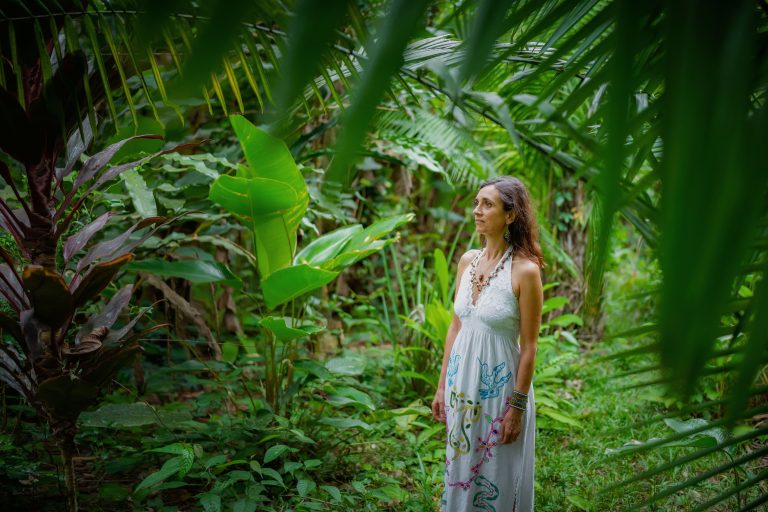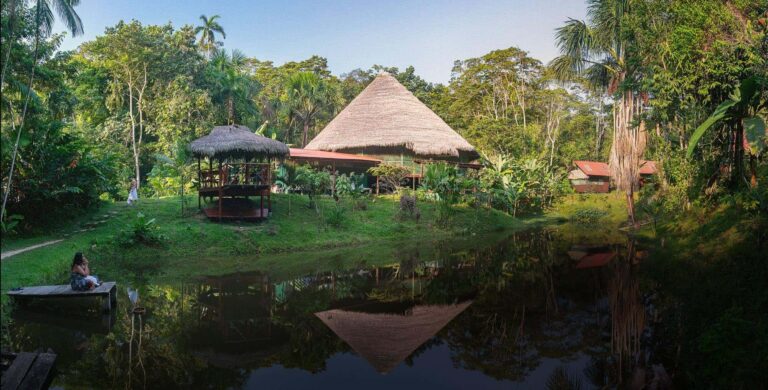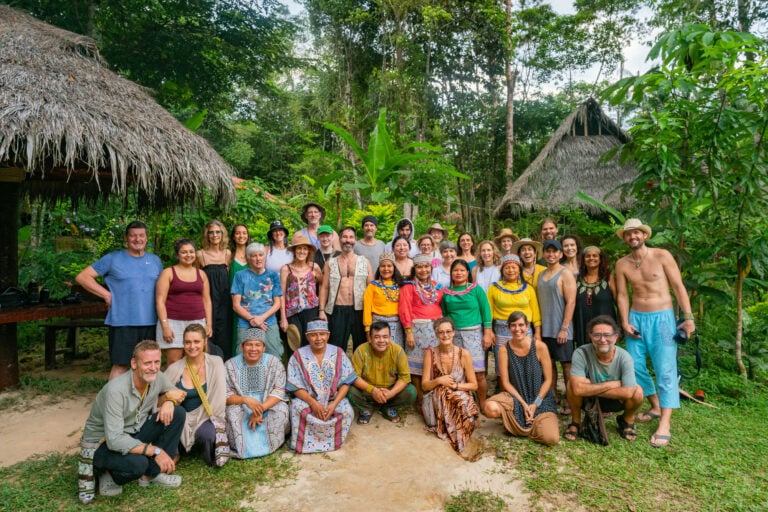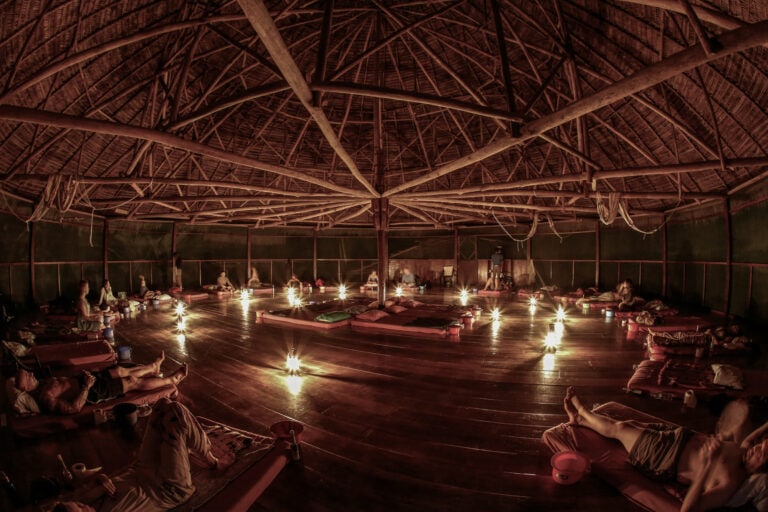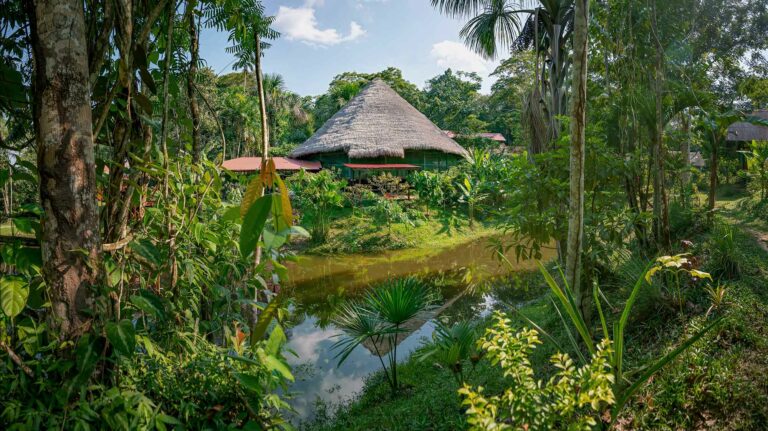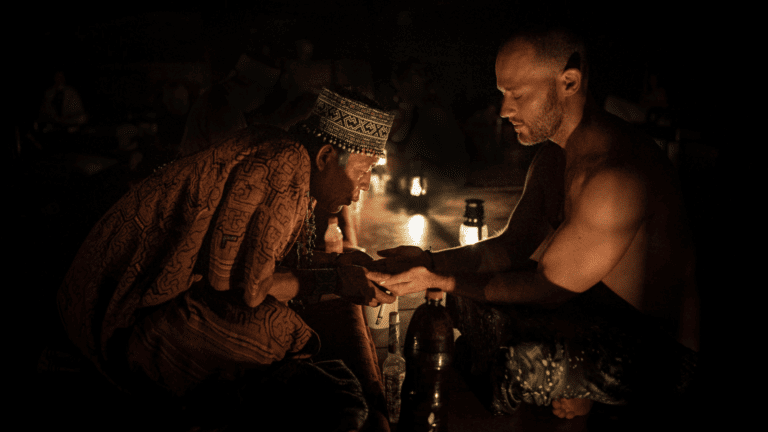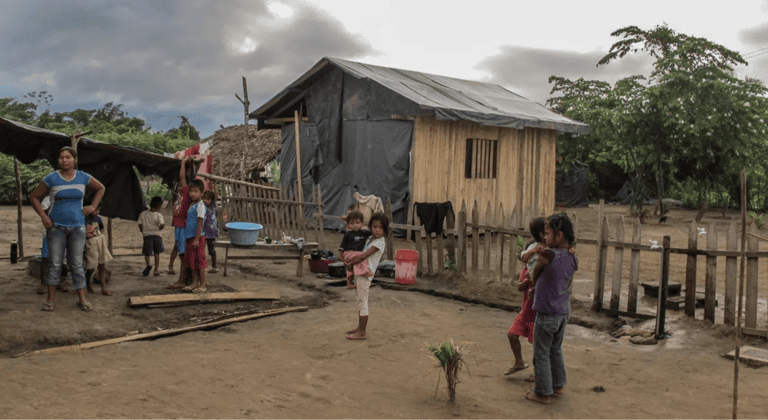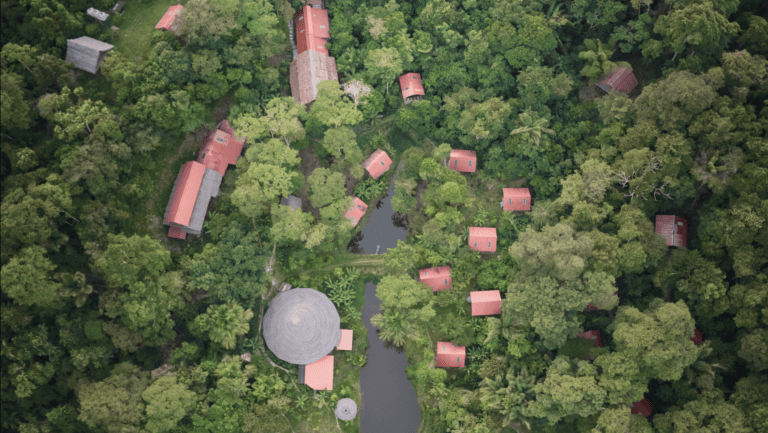Ayahuasca is a sacred visionary brew that has been used for centuries in healing ceremonies by various indigenous cultures in the Amazon basin. The beverage is a decoction of two key plants, the ayahuasca vine itself, scientifically known asBanisteriopsis caapi, and the vision-inducing, DMT-containing leaves of the chacruna plant, also known as Psychotria viridis.
The two plants work together in an amazing synergy: chemical compounds in B. caapi, the beta-carbolines, inhibit the enzymemonoamine oxidase in our bodies, which would otherwise prevent DMT found in the chacruna leaves from being orally active. Among the billions of possible combinations of plants in the Amazon rainforest, the fateful marriage of these two plants yields one of the most powerful psychoactive substances on earth. The circumstances of this incredible discovery remain shrouded in mystery.

The journey doesn’t end after your first ayahuasca experience, but rather has only just begun.
Via: Dr. Morley Read | Shutterstock.
An incredible, potentially life-changing journey begins when one has decided to work with ayahuasca. As the curandero who I work with often says, the journey doesn’t end after your first ayahuasca experience, but rather has only just begun. The insights into one’s self and the nature of this mysterious life we live as gleaned from even a single ayahuasca experience can be wholly transformative. Psychological belief structures, which underly detrimental behavior patterns, may come crumbling down in the light of higher awareness engendered by ayahuasca. This sacred medicine can bring one into direct contact with one’s higher self, or spirit, which consequently facilitates the deep healing often encountered by ayahuasca users. It is as if the medicine allows for one’s habitual mental state and tendencies to be temporarily suspended so that a more profound state of being not normally accessible in our day-to-day lives can be accessed.
Neurobiological studies of long-term ayahuasca users support this notion, as distinct areas of the brain involved in high level constructs such as the ego or self are known to physically change with prolonged use of ayahuasca. Furthermore, other investigations have shown that ayahuasca “hyperactivates the entire brain region where we store and process emotional memory, often uncovering long-forgotten memories.” This hyper activation overrides previously deep-seated emotional patterns, thereby permitting the creation of new neural connections.
In the last 30 years, ayahuasca has gained global notoriety and extended its reach to pull at the hearts of thousands of foreigners who make their way to the Amazon to participate in healing ceremonies. These ayahuasca pilgrims travel across the globe for reasons such as healing from trauma, drug addiction, anxiety, depression, and even cancer. Others simply seek to deepen their spiritual connection to themselves and to something greater. Scientific studies have dutifully traveled alongside the upsurge of interest in ayahuasca. There are now a total of 145 studies in PudMed that appear under a search for the term “ayahuasca” — 140 of which have been published since 2001.
A couple studies (here and here) have shown that a single dose of ayahuasca is sufficient to break major depressive episodes in patients who suffered from treatment-resistant depression and that these effects were sustained for at least 21 days.However, due to limitations in how these studies were conducted, it was not possible to unequivocally conclude that ayahuasca was fully responsible for the antidepressant effects observed in the patients. Furthermore, and more importantly, the patients were only followed for three weeks after their ayahuasca experience. Thus, the truly long-term persistence of the anti-depressive effects observed in these patients, all of whom suffered from recurrent episodes of major depressive disorder, remain to be seen.
Despite the growing body of evidence in support of ayahuasca and its potential treatment of major depression, caution is duly warranted: unmitigated hope in ayahuasca alone as a cure for depression may leave one both depressed and disappointed. There are several anecdotal reports found on social networks or websites that attest to this reality: several people suffering from depression who have taken ayahuasca, even a handful of times, did not find sustainable relief from their depression.
Thus, it is undeniable that something more is needed in this process of healing rather than the singular reliance upon this sacred medicine. I propose that this “something more” is a dedicated spiritual practice, critically important in supporting one in daily life, in between or even irrespective of ayahuasca sessions. Ayahuasca may show us the way, but it is up to us to walk the path and materialize the insights received outside of ceremony. A spiritual practice can provide the context and supportive background necessary to integrate one’s ceremonial experience, and like a mirror, can also reflect and inform one’s future ceremonial experiences.

